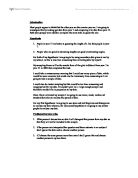Problems that may arise
- If the person I choose has no data I will disregard this person from my data so that they will not be included in the sample.
- if the person mis-interpreted the question and there estimate is an outlyer I shall ignore the data and re-choose another person.
- if I choose the same person more than once I shall ignore this and choose another person to replace them.
Sample
I have decided to take a sample of 100 people in total. I am going to take a sample of 50 people from year 7 and 50 people from year 11. I am then going to use stratified sampling to find out how many pupils I will need to take from each form within each year and also ensure that my sample is in proportion to my data . I shall then use my random number button on my calculator to obtain an un-biased sample.
Stem and leaf diagrams
Firstly I am going to put my sample into stem and leaf diagrams to see the initial shape of my sample and to help me to decide on the groups for my cumulative frequency tables.
This is an unordered stem and leaf diagram showing my sample of lengths from year 7
This is a uni-modal stem and leaf diagram. It shows that the modal group in the data is 20 – 29. the actual length of the line was 201cm so this shows that a large amount of people in year 7 did well at estimating the length.
This is an un-ordered stem and leaf diagram showing my sample of lengths from year 11
This is a bi-modal stem and leaf diagram. It shows that the 2 modal groups in the data were groups 21-9 and 25-9. this tells me that a large group of people were quite close to the estimate and that another moderately large group were quite bad at guessing the estimated length.
This is an ordered back to back stem and leaf diagram showing my sample of lengths from both year 7 and year 11
Year seven Year 11
The data from year 11 has a larger spread. The data from year 7 and year 11 has similar modal groups although it shows that more year7 pupils estimated correctly the length of the wood compared to the year 11.
I am going to group my data before putting it into a histogram because the lengths are rounded up to the nearest whole number.
Frequency tables
Year 7
Year 11
I have put my data into frequency tables so that I can firstly group up my data so that it is continuous and secondly so that my data is ready to be put into a histogram.
Histograms
Year 7
Statistics for Data Set 1
Grouped Data Statistics:
Total Frequency, n: 52
Mean, x:
Standard Deviation, x: 43.7078
Mean + 1sd = 253.6788 (freq. 14.94, probability. 0.2873)
Mean – 1sd = 166.2632 (freq. 22.94, probability. 0.4412)
Mean + 2sd = 297.3866 (freq. 18.51, probability. 0.3559)
Mean – 2sd = 122.5554 (freq. 29.39, Probability. 0.5653)
Mean + 1sd = 166.2632 to 253.6788
Modal Class: 200.5-
Lower Quartile: 200.763
Median: 204.184
Upper Quartile: 234.167
Semi I.Q. Range: 16.7018
Öf = 52
Öfx = 1.092E+004
Öfx² = 2.392E+006
Mean = 210
Standard Deviation = 43.71
Variance = 1910
Year 11
Grouped Data Statistics:
Total Frequency, n: 52
Mean, x: 230.654
Standard Deviation, x: 38.9227
Mean + 1sd = 269.5767 (Freq. 17.51, Probability. 0.3368)
Mean – 1sd = 191.7313 (Freq. 18.11, Probability. 0.3482)
Mean + 2sd = 308.4994 (Freq. 24.58, Probability. 0.4728)
Mean – 2sd = 152.8086 (Freq. 24.35, Probability. 0.4683)
Mean + 1sd = 191.7313 to 269.5767
Modal Class: 229.5-
Lower Quartile: 205.5
Median: 231
Upper Quartile: 250.5
Semi I.Q. Range: 22.5
Öf = 52
Öfx = 1.092E+004
Öfx² = 2.392E+006
Mean = 210
Standard Deviation = 43.71
Variance = 1910







